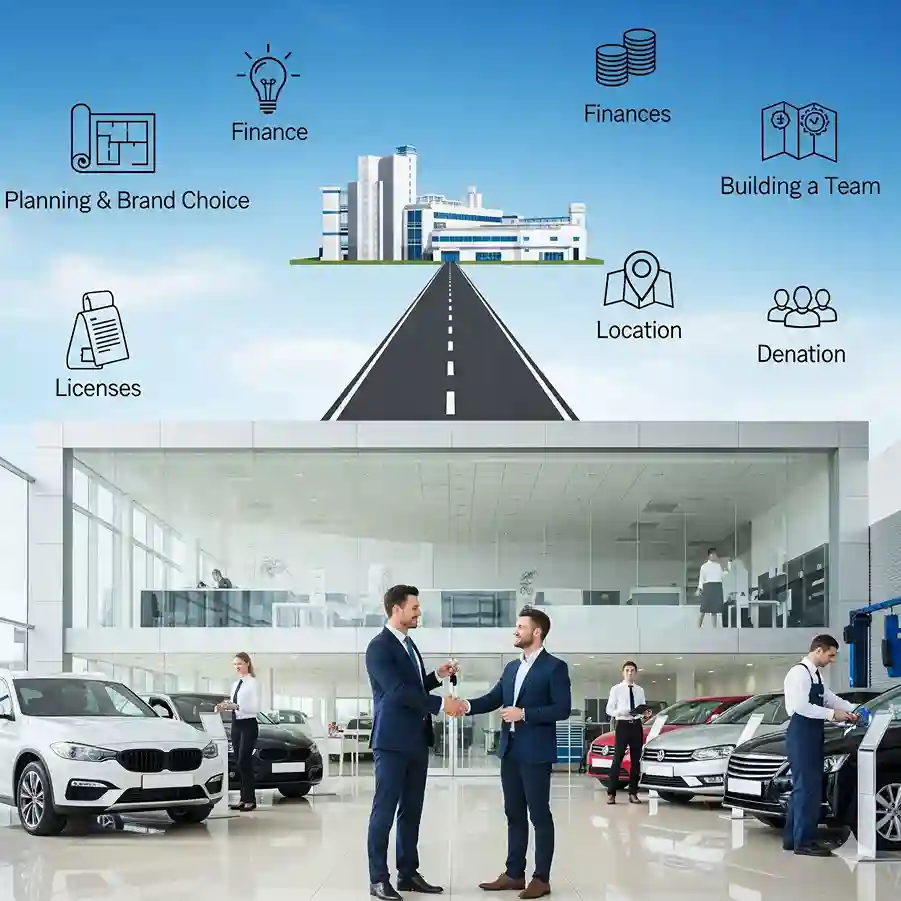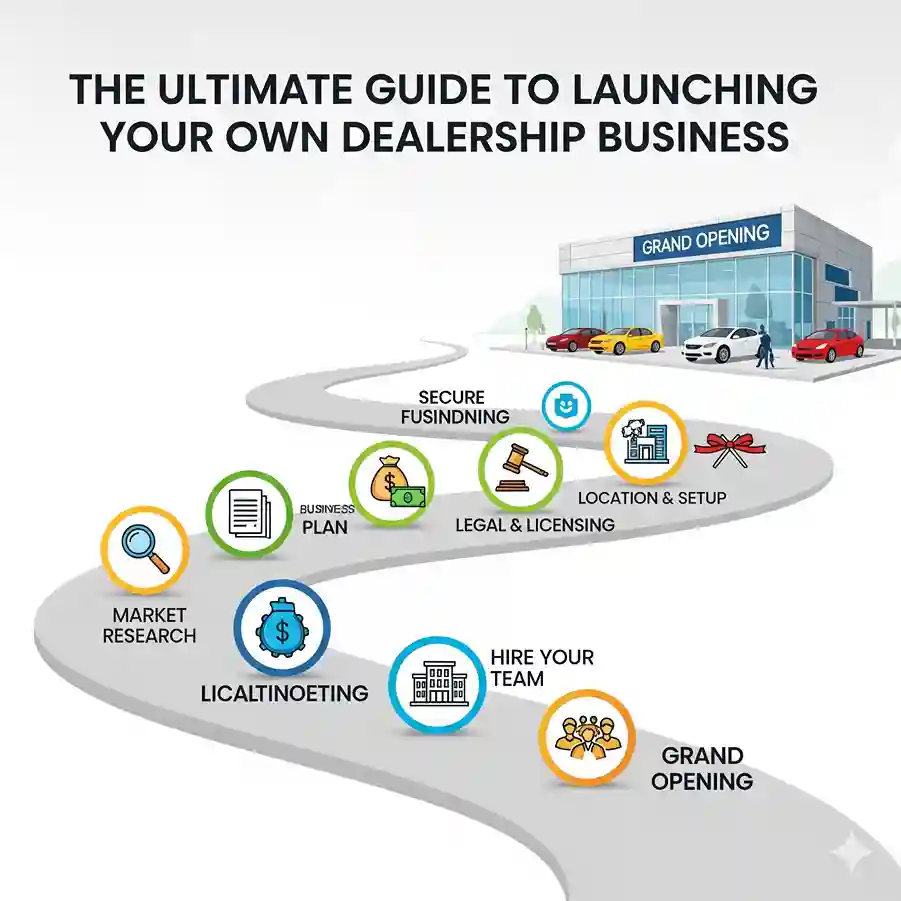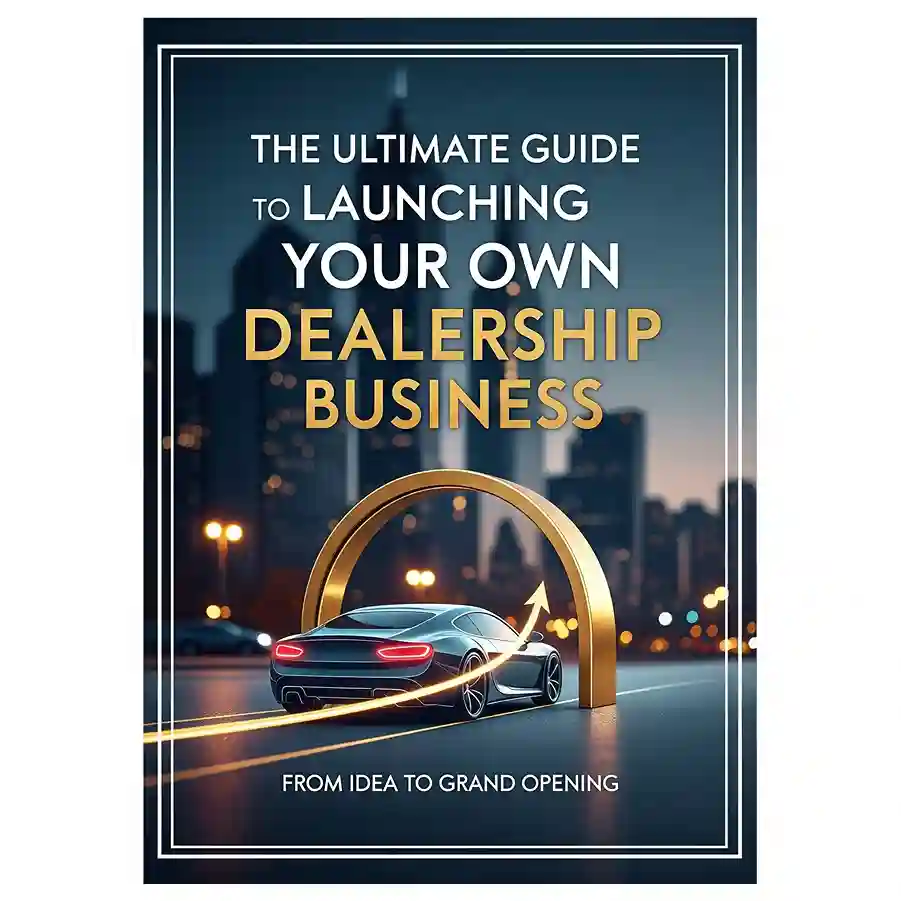Ever wondered who is between the huge factories that produce our cars, bikes, or electronics and us the customers, who purchase them? This crucial link is the dealer. The dealership is an authorized, official seller of a particular brand. You partner with a big company like a car maker and sell their products to the public. This model is extremely popular because it allows you to sell products people know and trust.
It is possible to achieve financial independence and great success by starting a dealership. You can become a leader in your local community by providing quality products and services. This venture, however, requires careful planning and significant investment. It also requires a commitment to excellent customer service. This guide will help you turn your entrepreneurial dream into reality by guiding you through each step in simple, clear language. This guide will take you through every step, from selecting the right brand to setting your showroom up and building a successful team.

Step 1: Select Your Partner Brand and Product
What will you sell is the first and most important decision that you need to make. Your passion for the product and market research should combine to make this decision.
Find Your Niche
You should start your journey with some reflection. Do you love the latest tech gadgets and are a technology enthusiast? You might be a good fit for an electronics store. Are you passionate about motorcycles and automobiles? You may be suited for a career in the automotive industry. You may live in an area with a lot of farming, so an agricultural equipment dealer would be a good choice. A business that you’re passionate about will motivate you and give you a competitive edge. Your enthusiasm will spread to your clients.
Market Research for Your Local Market
You need to be a detective once you’ve got an idea. Market research is a must.
- What is the need of people? Does there exist a growing middle-class looking for affordable vehicles? Do many construction projects require heavy machinery to be used?
- Who are your competitors? Do you have a competitor? Is there more than one dealership selling the same product? You may struggle if the market is saturated. Find a niche that you can fill.
- What’s the local economic outlook? The success of a dealership is often linked to the local economy. Growing economies mean more money for people to spend on expensive items.
Read Our Book: Click Here
Choose a Reputable brand
You must choose a partner brand after you have selected a product category. It’s like selecting a partner to build a long-term business relationship. Your reputation is directly affected by the brand’s.
Consider these key factors when selecting a brand:
- Brand Reputation and Trust: An established and trusted brand will attract customers. A product that people trust is more likely to be purchased.
- Manufacturer support: The best manufacturers don’t only sell you products, they invest in your success. Does the manufacturer offer comprehensive training to your sales team and technicians? Are they able to offer marketing assistance, such as advertising materials or financial support for local campaigns?
- Profit Margin: It is important to know how you are going to make money. The manufacturer will give you the product at a set price and you’ll sell it to your customers at a higher one (the Manufacturer’s Suggested retail price or MSRP). Your gross profit is the difference. Find out the average profit margins of the products and services offered by the brand.
- Dealership agreement: Read the terms and conditions of the contract carefully. What is the minimum initial investment? Do you have to meet monthly sales targets? What conditions can you terminate the partnership?
Read More: FEMA Guidelines 2025: Impact on MSME Exporters and What It Means for Export Growth
Step 2. Create a detailed business plan
Your business plan is a roadmap. This document is professional and outlines all aspects of your future dealership. This plan is not only a guide, but it will be crucial if you want to get a bank loan.
The Key Sections in Your Business Plan
- Executive summary: Here is a concise, but powerful summary of the entire plan. This section should be written last after all other sections. This section should be a good way to grab the attention of your reader and get them interested in learning more.
- Company description: This is where you describe the legal structure of your company. Are you a sole owner, a partnership or a limited private company? Your mission and vision should be stated.
- Market Analyses: In this section, you will find all of the information from your research. Describe in detail your target audience (their age and income, their lifestyle). Analyze the strengths and weaknesses of your competitors.
- Specification of Products and Services: Be specific. You will not only be selling the primary product. After-sales services make up a large part of the dealership’s profits. These include repairs, maintenance, official spare parts and accessories.
- Sales and Marketing Strategy: What will you do to reach your customers. You should have a variety of marketing strategies in your plan. You could, for example, use radio ads, local newspaper ads and brochures. Plan an event to celebrate the grand opening of your business. This will create buzz within the community.
- Financial Projection: This section is critical for investors or banks.
- Startup costs: List all expenses required to open the doors. Included in this are the costs of your initial inventory, the showroom rental or purchase, the renovations, the license fees and the equipment you need for your service centre.
- Monthly Operating Costs: List your monthly expenses such as salaries, water and electricity bills, marketing budgets, and loan repayments.
- Revenue forecasts: Create realistic sales projections for the first three to five year period. This should be based on your research into the market and how well your brand has performed in similar areas.
Step 3: Arrange your finances
Capital-intensive dealerships require a large amount of money at the beginning. Initial inventory will be the biggest expense. Stock is necessary to make sales, but it can be expensive.
Sources of funding
- Personal savings: The majority of entrepreneurs invest some of their own money. This will show investors and banks that you’re committed to your venture.
- Business loans: Approach banks with a solid business plan. The Indian government offers small and medium enterprises (MSMEs) schemes such as the MUDRA Loan.
- Manufacturer Financing : Many manufacturers have financing arms. You may be able to get a special loan program or credit terms that are flexible. The dealership model offers this benefit.
- Investors You can also look for funding from an investor who is interested in your business and willing to invest money in exchange of a stake in the company.

Step 4: Legal and Location Setup
It is now time to officially register your business.
Read More: Want To Start A Business? Start It Today!
The Dealership Agreement
This is the contract between you, the customer, and the manufacturer. You should hire an attorney to carefully review this contract before signing it. The agreement will define the terms of the partnership. This includes your sales territory, the geographic area in which you can operate, sales targets and the brand standards for your service center and showroom.
Registration and Licenses
- Business registration: Register your company officially with the Registrar of Companies.
- GST Registration To legally operate, you must register to claim tax credits, and issue invoices.
- Trade Licence: Get a license for your business from the local municipality.
- Permits Specifics: Dealerships of vehicles must get the approval of the Regional Transport Office to register vehicles. Other permits could be required depending on the product.
Read Our Project Report: Click Here
Find the Perfect Location
The location of your dealership is crucial to its success.
- Visibility : Select a location along a road with a high volume of traffic. It is better to make it easy for people find and see you.
- Space You’ll need enough space to accommodate a showroom that is friendly to customers, a service center with all the necessary equipment, an inventory warehouse or stockyard, and a central office.
- Customer experience: Create a showroom that is bright, inviting, and professional. Make sure there are enough parking spaces for your clients.
Step 5: Create your All-Star Team
Your employees are the faces of your company. Their performance directly impacts your sales and reputation. They interact with customers each day.
- Sales Team Hire people who are good listeners and are excellent at selling. They should be enthusiastic about the product, and be able to clearly explain its benefits and features.
- Service Techs: You need certified and skilled technicians for your service center. Their knowledge will help build trust with customers and generate revenue through repairs and maintenance.
- Support staff: You’ll also need to hire people for administration, accounting and customer relationship management.
The manufacturer is likely to provide mandatory training. This will ensure that your team has expert level knowledge about the products and services they are selling.
Discover the Right Business for You With Our Startup Selector Tool
Conclusion
It is a big undertaking to launch a dealership, but there are also many opportunities. This business model combines the freedom and strength of an independent entrepreneur with a partnership with a well-established brand. It isn’t just about selling a product; it’s about building relationships, delivering outstanding service and becoming a respected name in the community. You can turn your idea into a profitable business with a clear plan and passion for the product.
Dealership Business: Frequently Asked Questions
Q1: How much profit can I really make from a dealership?
Honestly, it depends. You might make a lot, or sometimes not much. It’s not just about selling cars. The profit on one car isn’t huge—usually just a little bit, like 3-7%. But the real money often comes from things like repairs, spare parts, and extras. Those things have bigger profits.
Q2: Do I need prior experience in the industry to start a dealership?
No, you don’t really need to have done this before. It helps, but it’s not required. What matters is if you know how to run a business, have enough money, and care about your customers. Most brands will teach you what you need to know anyway.
Q3: What is the single biggest challenge in running a dealership?
The hardest part is dealing with inventory. You have to keep enough cars or products so customers can buy what they want. But you don’t want too many just sitting there, because that ties up your money. You always need to check what’s selling and what’s not.
Q4: Can I open a dealership that sells products from multiple brands?
Usually, no. Most big brands want you to only sell their stuff. If you sign up with one, you can’t really sell others. They want you to stick with them and not help their competition. So, you pick one brand and work with them.







